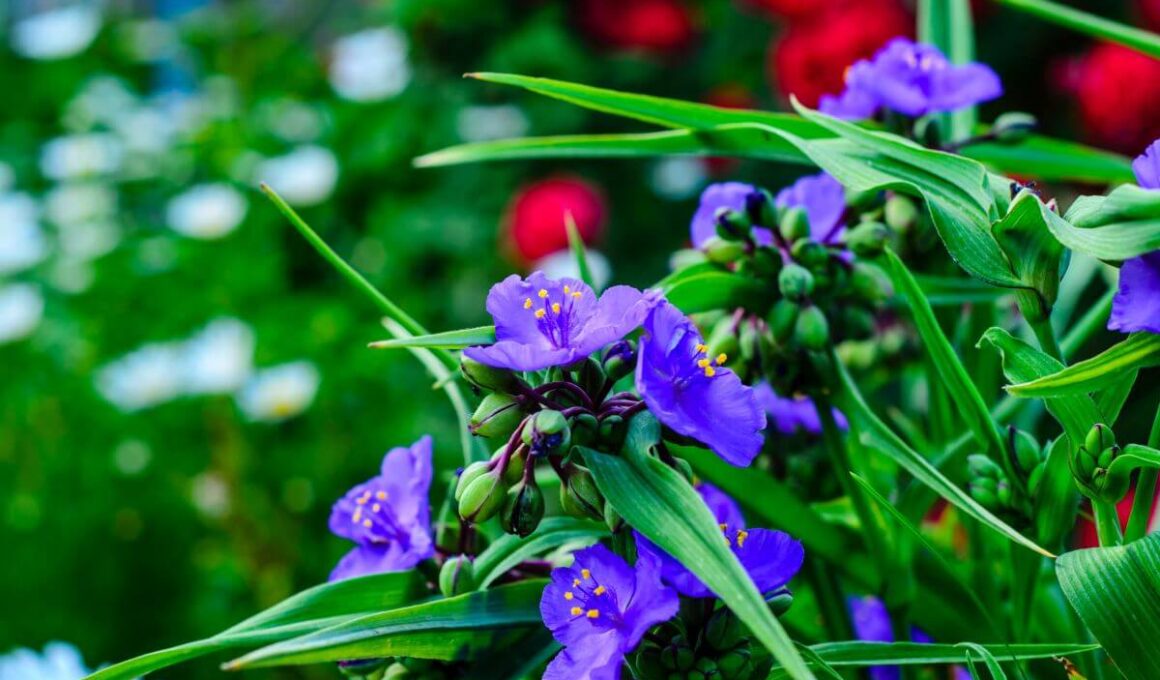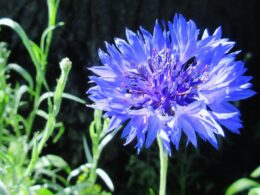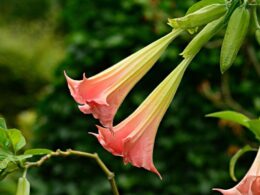What do you need to know about growing a spiderwort flower? This guide will teach you everything you need to know to get your plants blooming beautifully. So, read on for all the info!
Spiderwort Flower: Basic Information
The spiderwort flower is a herbaceous perennial plant that blooms in the spring and summer. The flowers are small and white, blue, pink, or purple, usually with three petals and six yellow anthers. The leaves are long and narrow, and the plant can grow to be about two feet tall. Spiderworts are native to the Americas, and can be found in woods and fields. The flowers are often used in bouquets, and the plants can be grown in gardens.
Habitat and Other Names
Tradescantia, a scientific name for a spiderwort flower, is actually a genus of more than 80 species of perennial herbs that are a part of the Commelinaceae family. The spiderwort plant is also known by the common names of spider lily, dayflower, and Wandering Jew. They are commonly found in woodlands, floodplains, and even roadsides throughout most of the United States. They can also be found in South America, Central America, and parts of Africa and Asia. They typically grow in clumps.
Characteristics
The Spiderwort plant has long been considered a weed by many farmers because of its ability to quickly spread and take over an area. The plant is able to reproduce asexually by sending out runners that take root and form new plants. It can also reproduce sexually by producing seeds. In many Tradescantia species, each flower only blooms for one day, but a plant can produce many clusters of flowers over the course of a few weeks.
Types of Spiderwort Flowers
There are many spiderwort varieties, each with their own unique appearance. Tradescantia virginiana (virginia spiderwort) is a type of spiderwort that has white or light purple flowers. Tradescantia ohiensis, also known as an Ohio spiderwort, has dark purple flowers. Finally, Tradescantia zebrina has striped flowers that can be either pink or purple in color.
Spiderwort Flower: Growing Guide
Spiderworts are native to North America and can be found in a variety of habitats including woods, meadows, and marshes. These plants like to grow in moist, well-drained soils and prefer full sun to partial shade. And here are the most important tips and facts about this native plant, including its growing conditions, soil conditions, and sun needs.
Propagation Tips
Spiderwort flower is relatively easy to propagate from seed or division. To start your plants from seed, simply sow the seeds in a well-drained soil mix and keep them moist. Seedlings will emerge in 14-21 days.
To propagate by division, wait until the plant is dormant in the fall or winter. Then, dig up the entire plant and carefully divide it into smaller sections. Replant the divisions immediately in a prepared bed.
Soil Type
Spiderworts prefer moist, well-drained soils. They will tolerate a wide range of soil types but will not do well in waterlogged or sandy soils.
Watering
Water your spiderwort plants regularly, especially during hot, dry periods. These plants have shallow root systems and will wilt quickly if they do not receive enough water. Allow the top few inches of soil to dry out between watering.
Sunlight
Spiderworts prefer full sun to partial shade. They will tolerate some shade but may become leggy and produce fewer flowers if they don’t receive enough sunlight.
How to Care for Spiderwort Flowers
Spiderwort flowers (Tradescantia sp.) are lovely and delicate-looking blooms that add a touch of elegance to any garden. Though they may appear fragile, spiderworts are actually quite easy to care for. With just a bit of care, these flowers will thrive in any garden or landscape.
Deadheading
To keep your spiderwort flower looking its best, it’s important to deadhead it regularly. Deadheading is the process of removing spent blooms from the plant. This encourages the plant to produce new blooms and keeps the appearance tidy. To deadhead spiderwort flowers, simply snip off the bloom at its base with a sharp pair of scissors.
Spiderwort flowers are also known for being rather messy. As they bloom, they tend to produce a lot of pollen and nectar that can attract bees, ants, and other insects. To keep your spiderwort flowers looking neat, it’s a good idea to trim away any spent blooms or leaves that are covered in pollen or nectar.
Fertilizing
Lastly, a spiderwort flower benefits from being fertilized regularly. A general-purpose fertilizer applied once a month is all that’s needed. Be sure to follow the directions on the fertilizer package for best results.
Spiderwort Flower: Pests and Diseases
One of the most common problems with spiderworts is powdery mildew. This fungal disease appears as a white powder on the foliage and stems of the plant. It can cause the leaves to yellow and drop off, and it can eventually kill the plant. Spiderworts are also susceptible to rust, another fungal disease that causes orange or brown spots on the leaves.
Overall, spiderwort flower is a very popular choice among gardeners thanks to the fact that it’s easy to grow. There are many beautiful species of spiderwort flower to choose from, so don’t wait any longer!



















